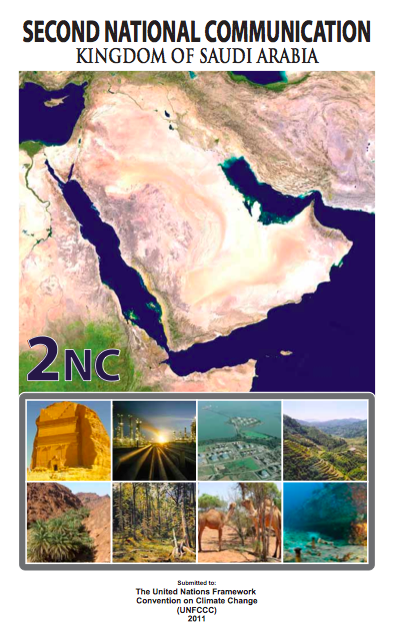Most of Saudi Arabia has sensitive ecosystem for any level of climate change especially on desertification processes. Assessment of these impacts indicated clearly that most regions have high vulnerability levels for climate change impacts on desertification processes. The climate change impacts as represented by temperature increase would elevate the levels of reference evapo-transpiration by about 1-4.5% at 1oC increase, and by about 6-19.5% at 5 oC increase in most regions. The expected yield losses of different types of field crops (including cereals, vegetables and forage crops) and fruit trees (including date palms) will range between 5 and more than 25%.
The Kingdom of Saudi Arabia comprises about four-fifths (80%) of the Arabian Peninsula, occupies approximately 2,250,000 square kilometers (868,730 square miles) area and bordered on the west by the Red Sea; on the east by the Arabian Gulf, Bahrain, Qatar and the United Arab Emirates; on the north by Jordan, Iraq and Kuwait; and on the south by the Sultanate of Oman and Yemen.
Saudi Arabia's Red Sea coast on the west stretches to approximately 1760 kilometers, while its eastern coast on the Gulf covers 650 kilometers, including 35 sq. km of mangroves and 1480 sq. km of coral reefs. The country has an arid climate with an average annual rainfall of 70.5 mm. Almost two thirds of the country is arid steppe and mountains with peaks as high as 3,000 meters, and most of the remainder is sand desert.
Saudi Arabia consists of a variety of habitats such as sandy and rocky deserts, mountains, valleys ('wadis'), meadows ('raudhas') salt-pans ('sabkhas'), lava-areas ('harrats'), etc. It includes most types of terrain which can be generally divided into two distinct groups of rocks; the Arabian shield and the Arabian Platform. The population of the Kingdom in 1992 was estimated at 16.9 million with a population density of 7 per square kilometer. Life expectancy at birth in 1991 was 69 for both men and women. Births that year were 37 per 1000 people, and deaths 5 per 1000, with an average annual population growth for 1991-2000 of 3.5%. Seventyeight percent of the population is concentrated in the urban areas.
Latest Publications
See allThe creation of a National Communication offers countries the opportunity to contribute with technically sound studies and information that can be…


